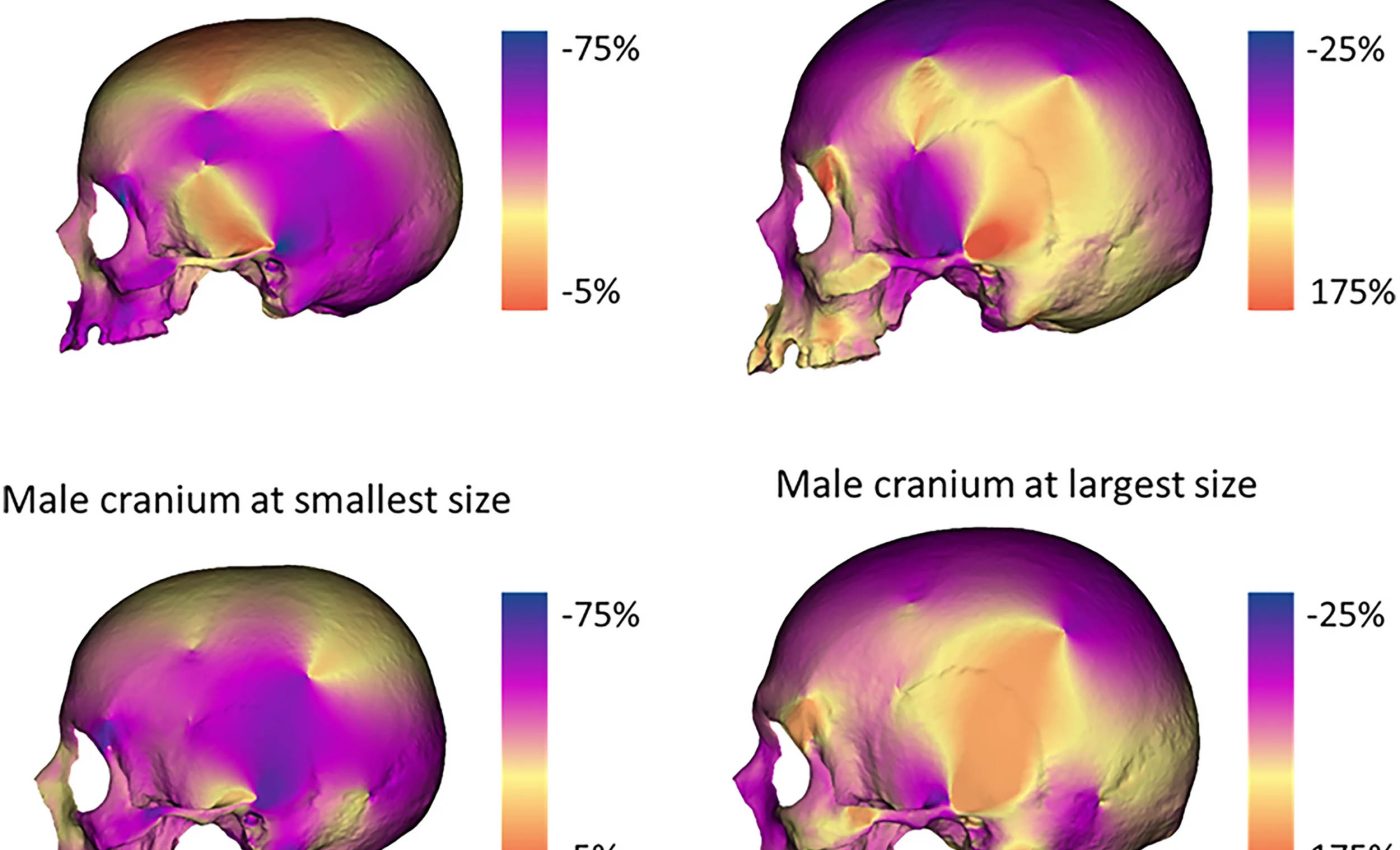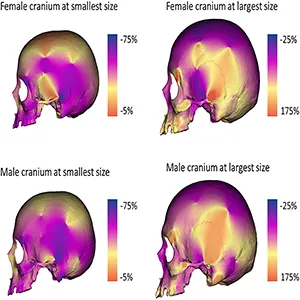
Fossil discovery changes what we thought we knew about prehistoric men and women
A fresh look at early members of our lineage suggests that males and females were not built alike. The size gap was wide, and it likely shaped daily life in ways we do not see in people today.
That conclusion comes from a new comparison of two classic Pliocene species that many readers know by name, but not by their striking differences.
Dimorphism seen in fossils
The work centers on Australopithecus afarensis, known from eastern Africa between about 3.85 and 2.95 million years ago, and on Australopithecus africanus, known from South Africa between about 3.3 and 2.1 million years ago.
Adam D. Gordon of the Department of Anthropology, University at Albany, State University of New York, led the study.
The South African record for A. africanus anchors the southern end of the comparison and spans a similarly broad window in deep time.
The two species lived far apart, which helps test whether size differences track local environments or something deeper.
Lucy, the small-bodied A. afarensis skeleton cataloged as AL 288-1, has long shaped how people picture that species. She was a tiny adult, an outlier who needed to be placed within the full spread of body sizes now known.
How the team measured dimorphism
Scientists use the term dimorphism for consistent differences between males and females in the same species. In primates, that often shows up as size gaps, and those gaps can point to how a species competed or cooperated.
Gordon’s team leaned on a geometric mean framework that was originally built to handle fragmentary fossils and missing measurements, a practical need when bones come in pieces.
Instead of trying to label each bone male or female, the approach looks at overall variation and tests how big the spread is compared with living species.
They focused on eight postcranial traits from the arms and legs, then compared those fossil spreads with gorillas, chimpanzees, and modern humans. That keeps the math honest by calibrating old bones against species where sex and size are known.
What the new comparisons show
Both Australopithecus species show strong dimorphism, with A. afarensis standing out as even more pronounced.
Adam D. Gordon notes that the Lucy species was not defined by a few unusually large individuals but by a consistent gap between the sexes, visible in body mass, limb breadth, and leverage.
In primates, strong male-biased size gaps usually go hand in hand with intense male competition and polygyny, a system in which some males mate with multiple females.
That pattern does not prove a mating system by itself, but it raises the odds.

Modern humans make a useful yardstick. Men today average about 12 to 25 percent heavier than women, while gorillas show much larger gaps, often 66 to 146 percent, depending on the population and metric used. Those numbers frame how unusual the fossil results are.
The new fossil comparisons sit much closer to the great apes than to us. That placement hints at social worlds where large males had advantages in contests, territory, and access to mates.
Rethinking earlier interpretations
“Skeletal size dimorphism in A. afarensis was most similar to that of contemporary Homo sapiens,” according to Philip L. Reno and colleagues from a study back in 2003.
Two decades ago, a widely read analysis argued the opposite for A. afarensis, claiming it showed a human-like pattern.
Gordon’s 2008 work helped explain why these debates dragged on by showing how to compare mixed and incomplete skeletons without stacking the deck.
That study reported that postcranial dimorphism in A. afarensis is more like that of large apes than like humans, once the statistics handle missing data and uneven samples.
The new paper builds on that footing, adds A. africanus for a direct fossil-to-fossil comparison, and tightens the test with updated samples and significance checks.
As a result, it narrows room for interpretations that relied on a few standout bones.
What this means for Lucy and her kin
Lucy was small, but she was not the whole story for her species. A. afarensis included much larger bodies, and the spread between small and large is better explained by sex than by random chance or geography, given the cross-checks against living primates.
A. africanus shows a big gap too, just not as extreme as A. afarensis. That diversity across two close relatives undercuts the idea that dimorphism steadily shrank over time in a simple line.
Those differences matter because they help sort behavioral hypotheses. With stronger size gaps, models that include higher levels of male competition move to the front of the line, while egalitarian scenarios step back.
Power, samples, and careful claims
“Results suggest intense sexual selection maintained high dimorphism in both fossil species,” wrote Gordon. Fossil tests can fail for dull reasons, like small samples. The new paper calls this out plainly.
Gordon’s statement reflects a simple statistical point. When the effect is large, you can detect it even with modest power, and that is what happened here for both species. It also points to next steps.
The same machinery can be applied to other early hominin groups to see whether the pattern repeats or splits in new ways.
The study is published in the American Journal of Biological Anthropology.
—–
Like what you read? Subscribe to our newsletter for engaging articles, exclusive content, and the latest updates.
Check us out on EarthSnap, a free app brought to you by Eric Ralls and Earth.com.
—–













